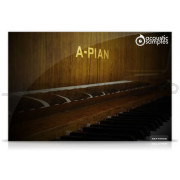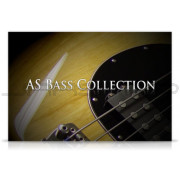You're currently on:
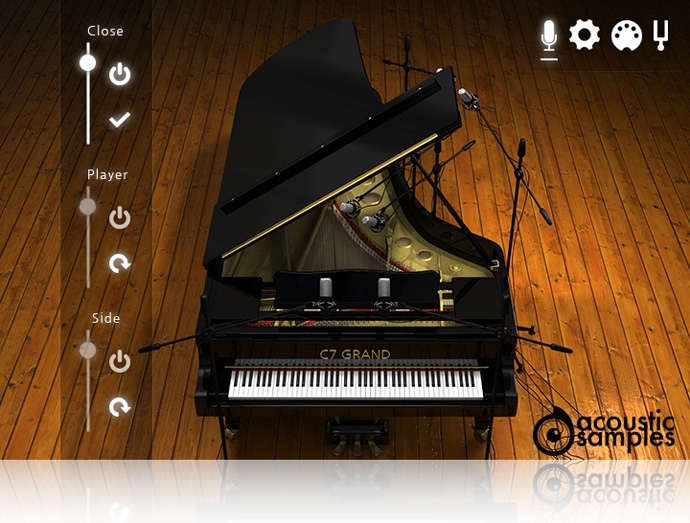
The C7Grand library is based on a Yamaha C7 Grand piano. The C7 is the biggest of the C series (227cm / 7'6") and is one of the most used pianos as it is present on many concert stages, studios and prestigious music events.
We wanted to capture its delicate, bright and precise sound that you hear everywhere, so we used every technology and piano simulation tools that we worked on over the years and here it is, the C7 Grand with all of the features you can think of, multiple microphones (3 different stereo perspectives), half pedal, repedal, sympathetic resonances and many other that we will detail below.
It is also very customizable as we know that not everybody has the same digital piano or has the same taste, you can change every aspect of it, the overall sound, the tuning (even complex microtuning are possible) or the MIDI response.
The C7 Grand is using the popular flac lossless compression format (UVI Workstation 2.5.2 is required to use it) to increase the streaming performances and loading time without losing any audio quality. You also save space, the library goes from 14Gb uncompressed to 2.41Gb.

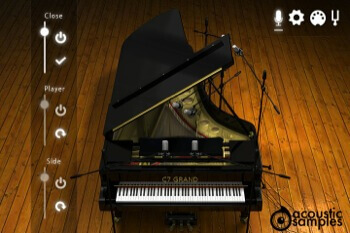
Microphones
The C7Grand has been sampled with 3 pairs of microphones carefully phase aligned. You can load, enable and control the volume of each of them.
The Close microphone perspective is placed inside the piano very close to the strings and gives powerful bass and a very detailed sound and a wide stereo image.
The Player microphone perspective is placed above the head of the piano player. The stereo image is almost like the one you get when you play, the sound is brighter and has more air than the close position.
The Side microphone perspective is placed exactly where a solo singer would be standing. It has even more air than the other two perspectives.
You can of course mix the multiple positions to get the best of each position.

Resonances
The first one is the sympathetic resonance that notes are creating with eachother when the sustain pedal is up. Every note will interact with all of the other pressed notes and make them resonate. We modeled the behavior of the strings but based all of that work on samples of the real resonances. You can adjust how much of it you want and also how much polyphony you want to allow for this feature.
The second one is also the sympathetic resonances, but this time when the sustain pedal is down, we call it the true pedal action, it simply allows the resonances to come in even if the pedal is pressed after you press the chord, and even if you release the pedal and press it again while still holding a chord.
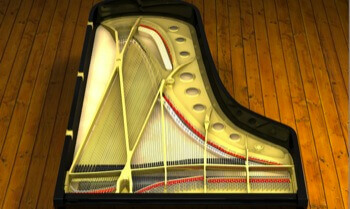

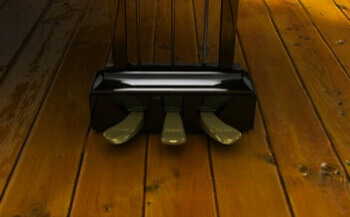
The pedals
The C7 Grand features some advanced pedal features.Repedal : Many classical musicians use repedaling to give some kind of a blend effect. We felt that it should be part of this library. Just like on a real piano, this effect is more present in the bass area.
Sostenuto : This is a playing mode that will allow the player to choose which dampers will be held. Any note pressed before pressing the sostenuto pedal will be held until you release the pedal no matter what you play.
Half pedal : This is another playing mode that is used to create a blending effect between chords. It is simply setting the sustain pedal right at the spot where the dampers barely touch the strings thus creating a long release sound full of resonance.
You can assign the different pedal to any controller.

Advanced Settings
On this panel you have access to many different settings to shape the sound of the piano itself and how it reacts. This is also where you enable and disable the advanced features like the repedal, half pedal or the sympathetic resonance.It is also where the reverbs can be tweaked.
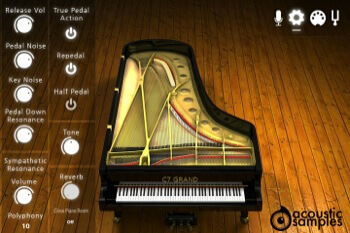

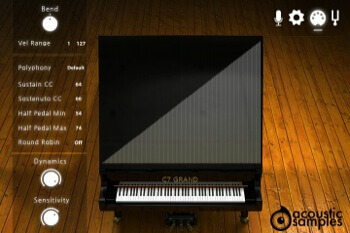
MIDI response
The C7Grand has been sampled deeply and we used advanced filters to blend the velocities together and make the splits unnoticeable.There is also a complete set of tools to tweak the velocity and volume response to make sure it fits your digital piano and your playing style.

Tuning
The tuning panel allows you to completely tune the piano. You can tune each note separately or use the Tuning Mode to choose if you want to apply this to every note or to every octave only. This makes it very easy to apply microtuning tables for example.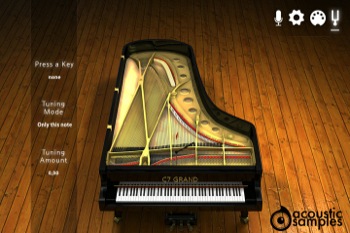
Sample player
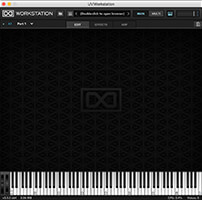

We provide it for free with every library that you buy, you don't need to buy an expensive sampler to use our products. It works on Mac (10.6 or later) and PC (windows XP SP2 or later), in standalone or as a plugin (VST / AU / AAX / RTAS / MAS) and in 32 and 64 bits. You can find more info about it here. If you want to use our products in osx 10.5, please contact us, you will need UVI Workstation v2.1.8 and earlier versions of the UFS files.



You will then be able to register it to your iLok account from our website on this page (you need to be logged in to access this page). The whole process is described in the FAQ (instructions + screencast).











